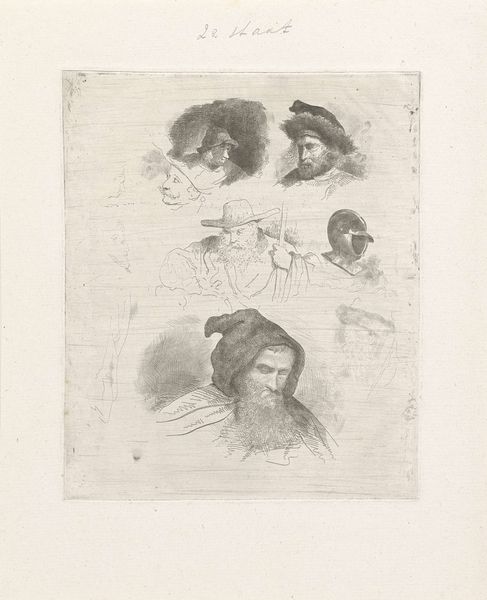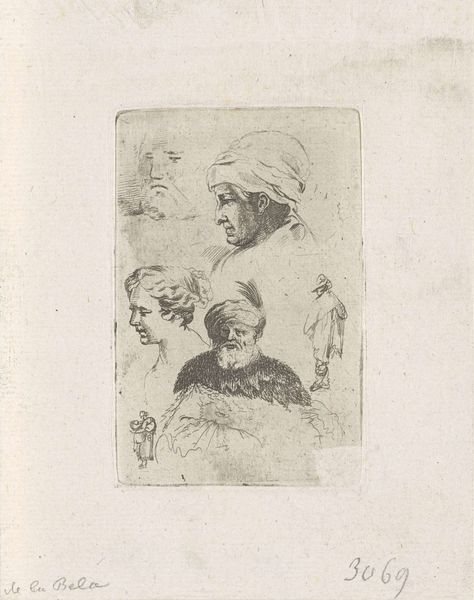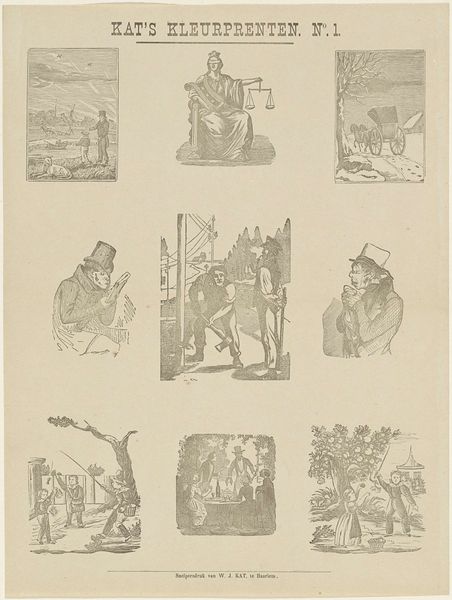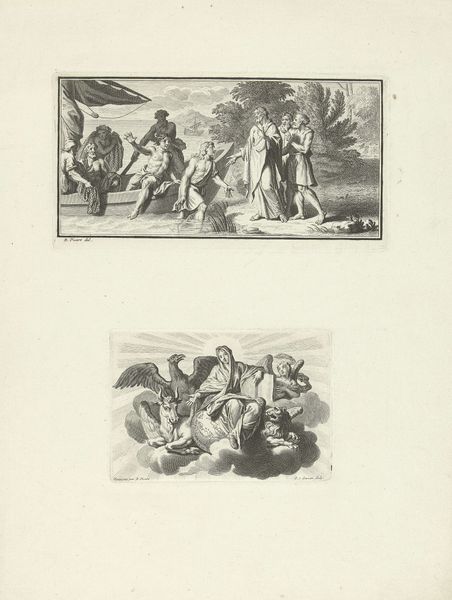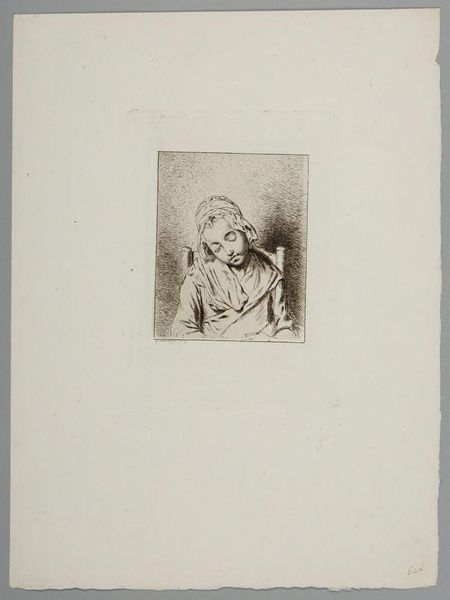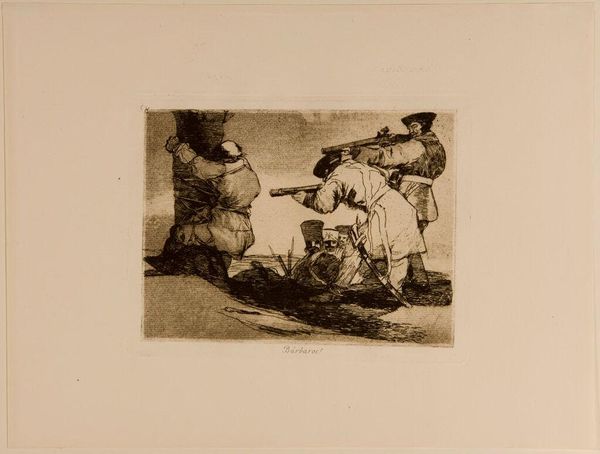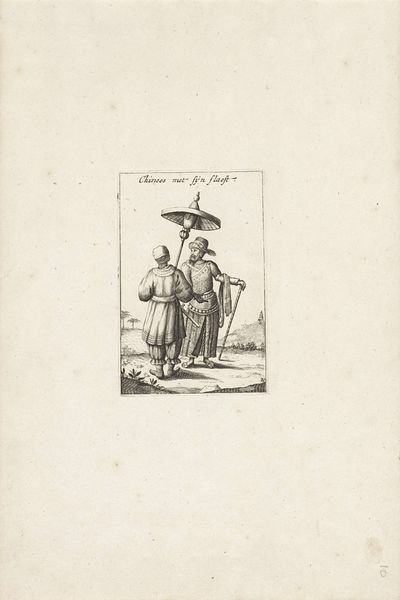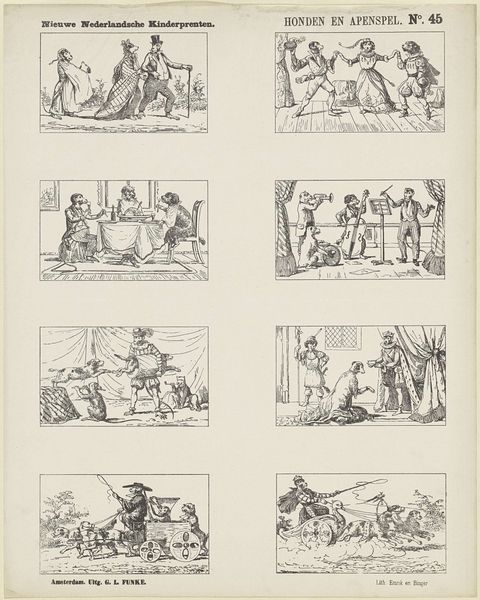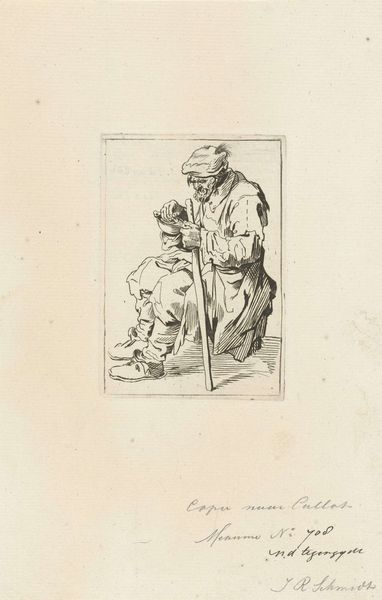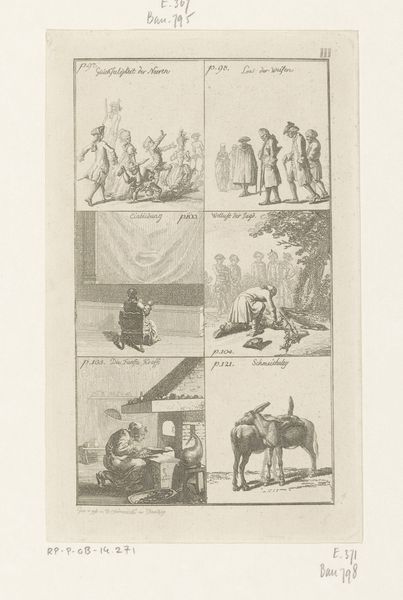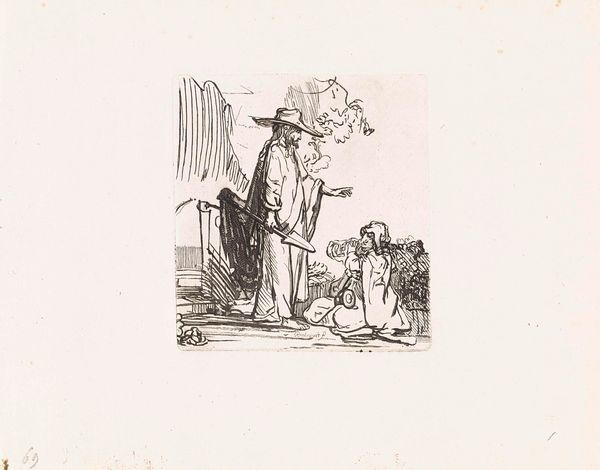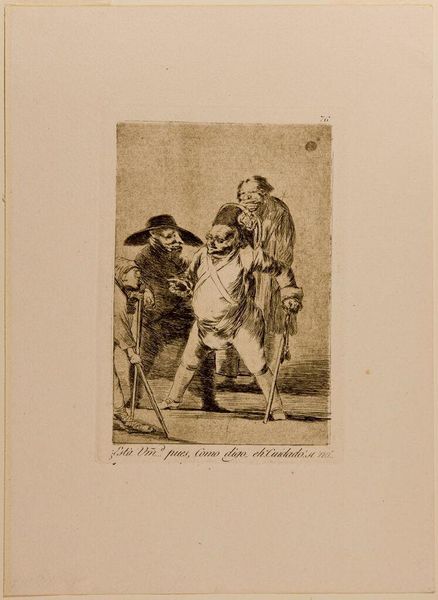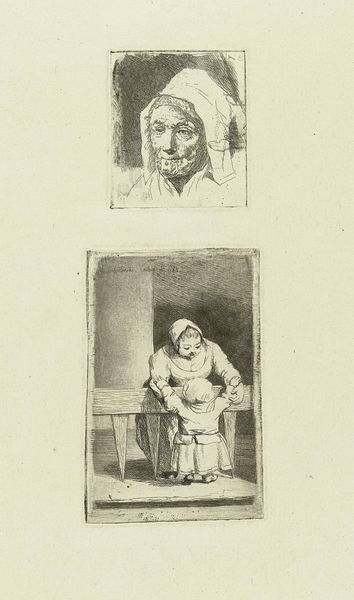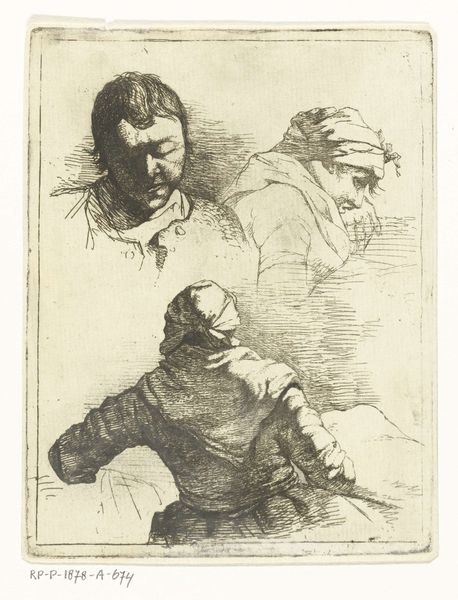
Dimensions: height 53 mm, width 52 mm, height 27 mm, width 70 mm, height 45 mm, width 52 mm
Copyright: Rijks Museum: Open Domain
Editor: This is "Musicerende kinderen en twee hoofdstudies" – or "Musician Children and Two Head Studies" by Marie Lambertine Coclers, dating from sometime between 1776 and 1815. It’s an ink drawing on paper. The vignettes give me a sense of daily life back then...but it's also odd to see multiple, seemingly unrelated scenes on one page. How should we interpret the image? Curator: That’s a good starting point. Consider the context. The late 18th century saw a burgeoning interest in genre scenes depicting everyday life, but also the rise of academies standardizing artistic training. Coclers, working in that environment, would have understood the expectation to create finished works and also practice studies. Editor: So these are studies? Curator: Perhaps. Or perhaps Coclers intended to show the range of her skills within a single work – a demonstration of her capabilities for potential patrons. She shows us scenes of music and community alongside portraits, signaling both her observational skills and technical abilities. Who had access to education and artistic training at the time, and who didn't, is very important here. Editor: Interesting, so this isn't necessarily one artwork with a unified subject but a portfolio of skills, making a case for patronage? Curator: Exactly. Think about the politics of imagery – what subjects were considered worthy of artistic representation? Genre scenes became popular with the middle class who sought images that reflected their own lives, while portraits cemented social status. Coclers hits both those marks in a single work. How might this have impacted the distribution or value of such artwork in its era? Editor: So, reading it as a portfolio really changes my perspective. It becomes less about the specific scenes, and more about Coclers' ambition and the societal expectations around art production. Curator: Indeed. It is also about accessibility and viewership; for whom would this sheet of paper be valuable? Editor: Now, looking at it, I'm noticing more of those power dynamics! Thanks for helping me understand this on a deeper, historical level. Curator: My pleasure. Art reveals itself through asking such questions!
Comments
No comments
Be the first to comment and join the conversation on the ultimate creative platform.
